Papers by Maria GIL ULLDEMOLINS

Writingplace, 2020
French artist Louise Bourgeois (1911-2010) moved to New York, where she would reside the rest of ... more French artist Louise Bourgeois (1911-2010) moved to New York, where she would reside the rest of her life, immediately after her marriage, in 1938. As a newcomer, a new wife, and a new mother, Bourgeois spent the first few years of her American life trying to balance domesticity and artistic practice. She resorted to producing prints, which afforded her certain flexibility compared to other medium. In 1947, Bourgeois created a small, printed booklet of illustrated parables, He disappeared into complete silence. This project, originally conceived as a way of inserting herself into the creative fabric of the city, proved to be a pivotal point for the artist. In it, Bourgeois presents a cast of anthropomorphised buildings, revealing a relationship between architecture and pathos. Bourgeois' architectural characters have been well-studied. This essay, though, wants to emphasise the way architectural and personal affect are explored in Bourgeois' texts for the booklet, and the way the artist juxtaposes visual and textual language.
Mosaic: an interdisciplinary critical journal, 2021
This essay discusses methodological issues raised by Barthes's La Chambre claire within the conte... more This essay discusses methodological issues raised by Barthes's La Chambre claire within the context of his later work. It examines Barthes as a precursor of autotheory, an umbrella term applied to writing (and other cultural expressions) that combines reflections on art and theory with an exploration of intimate life.

WritingPlace journal #2 Inscription: tracing place. History and Memory in Architectural and Literary Practice, 2018
Experimental poet and essayist Lisa Robertson (Toronto, 1961) has a singu-lar, lyrical approach t... more Experimental poet and essayist Lisa Robertson (Toronto, 1961) has a singu-lar, lyrical approach to architecture and urbanism. Best known for Occasional Work and Seven Walks from the Office for Soft Architecture (2004), her writing never forgets the body of the dweller, nor the body of the city. In the much less studied, book-length poem Cinema of the Present (2014), Robertson offers a polyphonic voice that explores the relationship between these two bodies in ‘real time’:
66
Wherever you go, you will be a city.
The question for you becomes what are we doing with our bodies, why are we here?1
Robertson’s poem can be read as an account of urban encounters. The poem reveals how an ‘embodied community’ needs past traces to empathi-cally relate to the city, and to others. We will link this to French theorist Michel de Certeau’s concept of tactics, developed in The Practice of Every-day Life (1980), and the important role these traces play for Certeau as a resistance against spatial and cultural homogenization.
By bringing these two authors together, we want to explore ‘tactical’ and embodied writing about architecture – a topoanalysis of otherness and mnemonic intimacy, intensifying spatial experiences.
Creative-Critical Papers by Maria GIL ULLDEMOLINS

TEXT, 2024
This contribution will focus on creativecritical citational devices. We will position creativecri... more This contribution will focus on creativecritical citational devices. We will position creativecritical writing in relation to scholarly research and the academic writing it typically results in, as well as performative writing and autotheory (a performative form in itself). Following Katherine McKittrick’s provocation “What if the practice of referencing, sourcing, and crediting … takes us outside ourselves?” (2021, p. 16), we understand creativecritical citational works as ecstatic: they stand outside themselves.
At the same time, performative writing’s citationality creates an “affective alliance with writing itself” (Pollock, 1998, p. 94) – “affective alliance” being key in autotheory too.
Ecstatic citations, then, allow text and voice to transcend themselves while opening up to these alliances, becoming other-like in the process. McKittrick names this as an unknowing and unhinging of the self (2021, p. 16). Similarly, Amy Hollywood describes “the self-shattering that occurs through identification with the lacerated textual other” (2002, p. 59). These creativecritical citational gestures imply an ecstatic merging with textualities and subjectivities that are radically different: historically (the anachronistic), existentially (the non-human) and even ontologically (the fictional).
Putting all of this together, in this creativecritical contribution we will examine writing that becomes ecstatic, both in form and content, more self-expanding than self-reflective – luminous, slippery, weird.
The Contemporary Journal, 2022

Phenomenology & Practice, 2022
This experimental paper proposes a shared exploration of the crease as a tactile, existential, an... more This experimental paper proposes a shared exploration of the crease as a tactile, existential, and artistic phenomenon. It takes Roland Barthes’ definition of his left-handedness as “a tenuous and persistent crease” as a basis. Hence, this phenomenon is a minor but stubborn mark on the self, a superficial matter. In order to portray an intimate and personal approach to the subject, this paper is written in first person. This “I”, though, is plural, a result of a collaboration. As part of the methodology developed to create this polyphonic voice, the paper is structured in a non-linear fashion. After each section, the reader can choose how to proceed. The imposed choices reveal the materiality of the text - they establish points of friction and awareness for a reader; and weave different discursive lines and surfaces. The aim is to allow the format to contribute to the definition of the crease, beyond images and excerpts in the content.
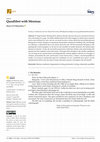
Arts, 2022
In Diagrammatic Writing (2013), Johanna Drucker discusses the power dynamics between texts intera... more In Diagrammatic Writing (2013), Johanna Drucker discusses the power dynamics between texts interacting on a page. So-called autotheoretical texts often engage in similar types of performative and relational lay-outs, and yet, not much has been written about this formal phenomenon. Bearing this in mind, I propose an experiment that performs relations by thinking with, and through, Las Meninas, a self-portrait that is not strictly about the self. All that surrounds Velázquez in the painting (the work-in-progress we do not see, the ensemble of courtly characters, the framed reproductions of masters’ works, the much-discussed mirror reflection) informs and contextualises the portrait, but also explodes it into much more. This paper thus attempts to ask whether autotheory can, by being aware of performative and diagrammatic writing, together with the use of images as citations, decentralise the auto- and become a more choral scene, a cluster, a textual quodlibet or medley. Can a form of writing make space for a multitude, or even, a multitude into a space? Can the autotheoretical self be only one more of many characters, present, with agency, but off-centred?

IDEA journal, 2021
The 2020-21 pandemic threw many of us into a forced exploration of our domestic interiors. For so... more The 2020-21 pandemic threw many of us into a forced exploration of our domestic interiors. For some, the limited contact with the exterior world provoked a need for a refuge and escape: the recurrence of the interior eventually gave way to our interiorities. Looking for ways to simultaneously materialise and circumvent a spatial, intimate, and spiritual sense of self, this visual essay borrows the sumptuous patterns and textures of the interior in Kitagawa Utamaro’s 1788 erotic print, Lovers in an Upstairs Room (Figure 01). These, cut-out as inspired by the block-printing process, have been layered with my own absolutely mundane, domestic setting. At the same time, two fragmentary voices, one ekphrastic and one auto-theoretical, mirror the print and the graphic layering, creating a third text by overlapping. These voices host a multiplicity of others: from the mystical classic The Interior Castle, 1577, by the sickly, cloistered, Spanish nun Teresa of Ávila, which describes an ecstatic topography of the soul; to Canadian poet Lisa Robertson’s 2003 ‘Soft Architecture: A Manifesto,’ which calls for softness as a form of resistance; and for description as a mystical practice: ‘Practice description. Description is mystical.’01 Can the crash of voices, cultures, and imagery add up to one particular description? Can this description of one’s interiority at a very specific time build connections between tangible and immaterial, ordinary and extraordinary? Can there be a secular, soft topography of the self, of one’s interior castle, able to resist the advances of a hostile reality?
Conference presentations by Maria GIL ULLDEMOLINS

Autotheory conference, Glasgow University
Vivian Darroch-Lozowski’s Voice of Hearing, 1984, begins with a narrator-unicorn; wording “creatu... more Vivian Darroch-Lozowski’s Voice of Hearing, 1984, begins with a narrator-unicorn; wording “creatures who are-not”. As she “shimmers” onto the page, she quotes Barthes, Cixous, Lacan, Lispector, and many others. Much later, in Irene Solà’s When I Sing, Mountains Dance, 2022, a mountain’s soliloquy is broken by quotation-like technical drawings of tectonic plates. In Notes on a novel (that I am not going to write), 2017, the artist publishes a digital environment that mixes a travel diary, annotations from different sources, candid photos, hand-drawn maps, and texts written by other invited artists. Can autotheory’s “I” be ecstatic, de-centered from individual embodied subjectivity towards the choral multitude of a landscape? Can an “auto-” be an “allo-” without losing itself? This presentation proposes traversing autotheory’s by-now familiar territory (the meta structures, the intertextual/intermedia games, the performative referencing), to arrive somewhere else.

For Foucault, parrhesia, the ancient Greek form of truth-speaking, is relational. This relational... more For Foucault, parrhesia, the ancient Greek form of truth-speaking, is relational. This relationality exists between one and others, as well as within oneself: in order to establish any ‘truth’, parrhesia demands to self-examine and align one’s discourse (logos), with one’s way of living (bios). For this presentation, we propose a creative-critical collaboration that links autotheoretical and parrhesiastic practices. On the one hand, we understand the bios not as a singular way of life, but as a set of kinships, obligations, relations, and vicinities – including the unconscious of the pulsional body, as well as the interaction with others, and the more-than-human. On the other hand, we rely on a polyphonic, transdisciplinary logos, a source of experimental techniques and devices that shatter the fallacy of an authentic, isolated, transparent discourse on oneself. We want to combine these in an exploration of an imaginary of ‘wilderness’. Not as a posthuman fantasy, but as a subjectivizing atlas of one’s inner and outer landscapes. We will exchange and experiment with our own bios, and also borrow from a vast array of sources: from mystics, to the Romantics, to contemporary ecological thinking, and postapocalyptic science fiction. We do not consider autotheory as merely a contemporary symptom of what Foucault called the ‘confessing animal’. To us, it can be a generative tool for exploration and acknowledgement of multiplicities, inside and outside; and a form of resistance to encroaching pressures that domesticate, deplete or gentrify our inner worlds.
Non-academic articles by Maria GIL ULLDEMOLINS
phd thesis by Maria GIL ULLDEMOLINS
Book and collection contributions by Maria GIL ULLDEMOLINS

77 Minor Terms for Writing Urban Places
As we write these lines-during the early days of the coronavirus outbreak, with the public life a... more As we write these lines-during the early days of the coronavirus outbreak, with the public life and infrastructure of European cities in lockdown-we are confronting a situation where personal, societal and spatial relationships are being fundamentally reconfigured. We once again come to realise how intricate are the relationships we establish with our built environment, and how much we take our attachments to urban places for granted. The coronavirus crisis also reminds us of other global crises, such as global warming and resource depletion, which sooner or later may strongly affect our living conditions. Even aside from these global challenges, European cities and the ways people live in them have been changing rapidly in recent years, due to various simultaneous processes such as increasingly market-driven urban development, growing inequality, migration, segregation and surveillance capitalism. In order to act in this unstable urban terrain, spatial professionals such as urban planners, architects, landscape architects, heritage managers and policymakers may need to seek alternatives to conventional codes and models of spatial development. These univocal diagnoses and rigid planning methods, based on precise cost-benefit calculations and hypotheses regarding the predictable effects of architectural interventions, are no longer reliable or feasible, and often fail to 19 18
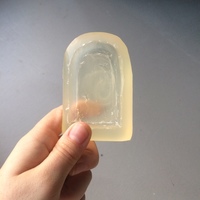
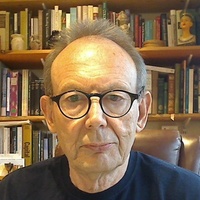





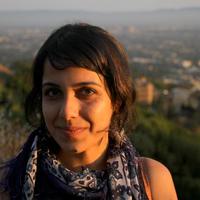

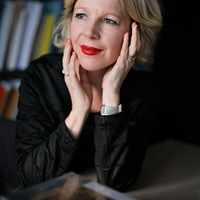

Uploads
Papers by Maria GIL ULLDEMOLINS
66
Wherever you go, you will be a city.
The question for you becomes what are we doing with our bodies, why are we here?1
Robertson’s poem can be read as an account of urban encounters. The poem reveals how an ‘embodied community’ needs past traces to empathi-cally relate to the city, and to others. We will link this to French theorist Michel de Certeau’s concept of tactics, developed in The Practice of Every-day Life (1980), and the important role these traces play for Certeau as a resistance against spatial and cultural homogenization.
By bringing these two authors together, we want to explore ‘tactical’ and embodied writing about architecture – a topoanalysis of otherness and mnemonic intimacy, intensifying spatial experiences.
Creative-Critical Papers by Maria GIL ULLDEMOLINS
At the same time, performative writing’s citationality creates an “affective alliance with writing itself” (Pollock, 1998, p. 94) – “affective alliance” being key in autotheory too.
Ecstatic citations, then, allow text and voice to transcend themselves while opening up to these alliances, becoming other-like in the process. McKittrick names this as an unknowing and unhinging of the self (2021, p. 16). Similarly, Amy Hollywood describes “the self-shattering that occurs through identification with the lacerated textual other” (2002, p. 59). These creativecritical citational gestures imply an ecstatic merging with textualities and subjectivities that are radically different: historically (the anachronistic), existentially (the non-human) and even ontologically (the fictional).
Putting all of this together, in this creativecritical contribution we will examine writing that becomes ecstatic, both in form and content, more self-expanding than self-reflective – luminous, slippery, weird.
Conference presentations by Maria GIL ULLDEMOLINS
Non-academic articles by Maria GIL ULLDEMOLINS
phd thesis by Maria GIL ULLDEMOLINS
Book and collection contributions by Maria GIL ULLDEMOLINS
66
Wherever you go, you will be a city.
The question for you becomes what are we doing with our bodies, why are we here?1
Robertson’s poem can be read as an account of urban encounters. The poem reveals how an ‘embodied community’ needs past traces to empathi-cally relate to the city, and to others. We will link this to French theorist Michel de Certeau’s concept of tactics, developed in The Practice of Every-day Life (1980), and the important role these traces play for Certeau as a resistance against spatial and cultural homogenization.
By bringing these two authors together, we want to explore ‘tactical’ and embodied writing about architecture – a topoanalysis of otherness and mnemonic intimacy, intensifying spatial experiences.
At the same time, performative writing’s citationality creates an “affective alliance with writing itself” (Pollock, 1998, p. 94) – “affective alliance” being key in autotheory too.
Ecstatic citations, then, allow text and voice to transcend themselves while opening up to these alliances, becoming other-like in the process. McKittrick names this as an unknowing and unhinging of the self (2021, p. 16). Similarly, Amy Hollywood describes “the self-shattering that occurs through identification with the lacerated textual other” (2002, p. 59). These creativecritical citational gestures imply an ecstatic merging with textualities and subjectivities that are radically different: historically (the anachronistic), existentially (the non-human) and even ontologically (the fictional).
Putting all of this together, in this creativecritical contribution we will examine writing that becomes ecstatic, both in form and content, more self-expanding than self-reflective – luminous, slippery, weird.